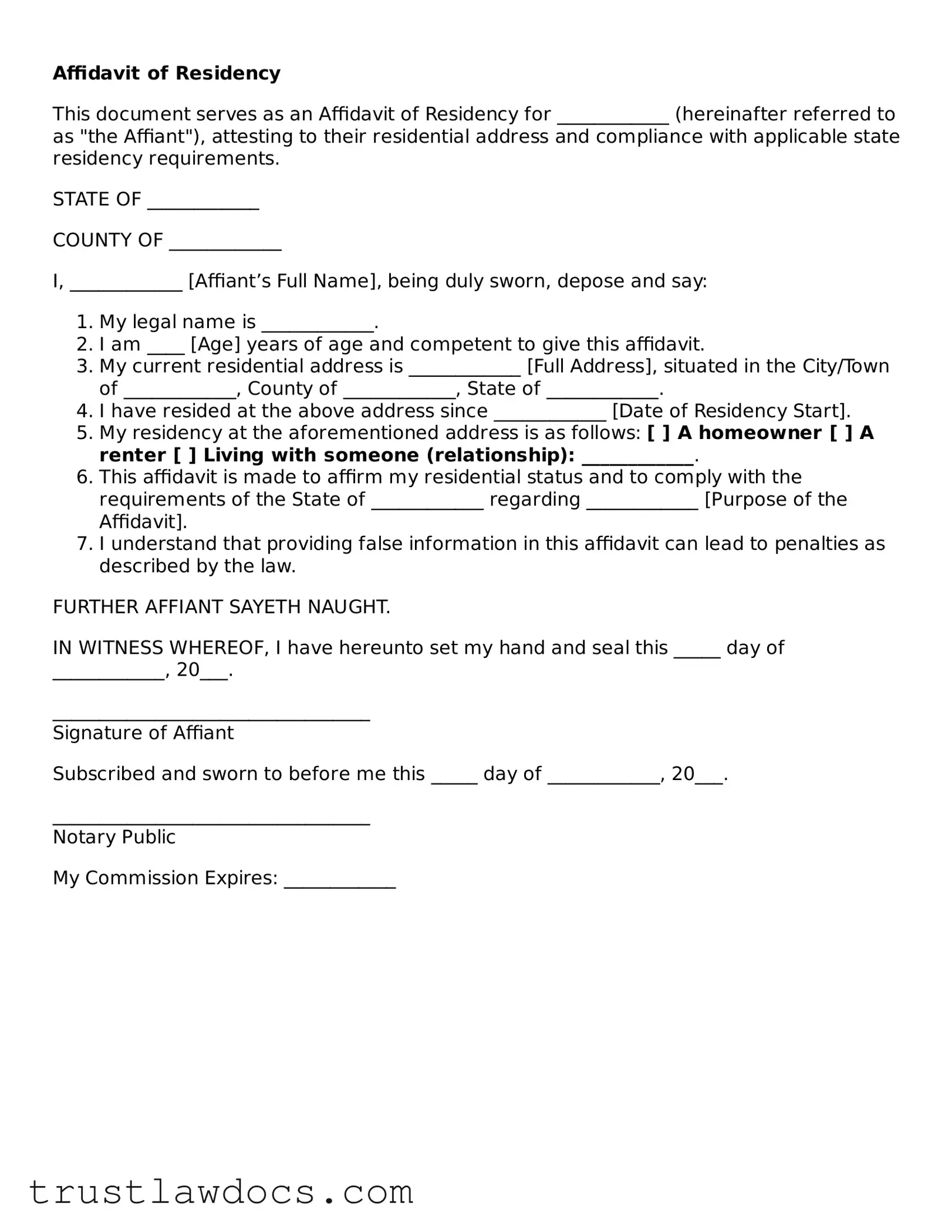What is an Affidavit of Residency?
An Affidavit of Residency is a legal document that is used by an individual to formally declare their place of residency. This document is often required by educational institutions, employers, and government agencies to verify an individual's address and to prove they live where they claim.
Who needs to complete an Affidavit of Residency?
Individuals who are asked to provide proof of their residence by a school, employer, or government entity may need to complete an Affidavit of Residency. This is common for enrollment in public schools, applying for certain types of government assistance, or meeting employment requirements.
What information is required to fill out an Affidavit of Residency?
To fill out an Affidavit of Residency, an individual will need to provide their full legal name, the address of their residence, how long they have lived at that address, and sometimes the names of other residents living at the same address. Additionally, the affidavit usually must be signed in the presence of a notary public who also signs and seals the document.
How can one obtain an Affidavit of Residency form?
An Affidavit of Residency form can often be obtained from the organization requesting the affidavit. Alternatively, generic forms are available online or one can be drafted by a lawyer to meet specific requirements.
Is there a fee to notarize an Affidavit of Residency?
Yes, there can be a fee to have an Affidavit of Residency notarized. The cost varies depending on the state and the notary service used. Some banks and legal offices offer free or discounted notary services to their customers.
What happens if someone lies on an Affidavit of Residency?
Lying on an Affidavit of Residency is considered perjury, as the individual is making a false statement under oath. Perjury is a serious offense that could lead to fines, penalties, or even criminal charges depending on the jurisdiction and the extent of the deception.
Can an Affidavit of Residency be used as proof of address for a driver’s license or state ID?
Yes, in many cases, an Affidavit of Residency can be used as proof of address when applying for a driver’s license or state identification card. However, the requirements vary by state, and it is advisable to check with the local Department of Motor Vehicles (DMV) for their specific documentation requirements.
How long does an Affidavit of Residency remain valid?
The validity period of an Affidavit of Residency can vary depending on the organization's requirements and the purpose for which it is being used. Typically, it is considered valid for one year from the date it is notarized, but it is important to verify this with the requesting entity.
Do I need to renew my Affidavit of Residency?
Whether you need to renew your Affidavit of Residency depends on the requirements of the entity requesting it. Some organizations may require a new affidavit annually, while others may not. It is wise to check with the organization to determine if and when a new affidavit is needed.
